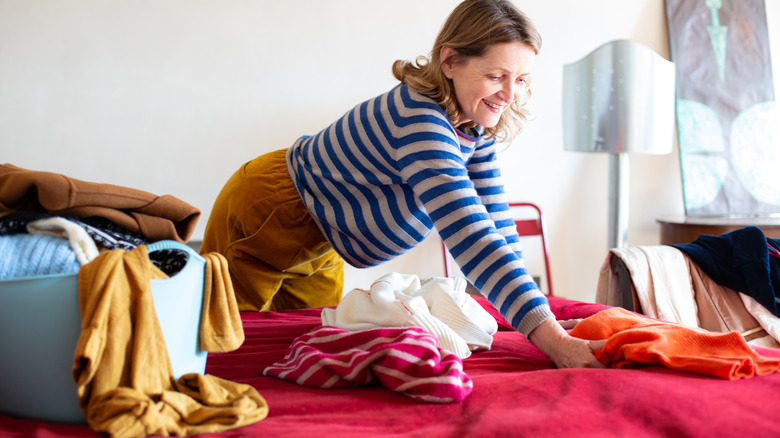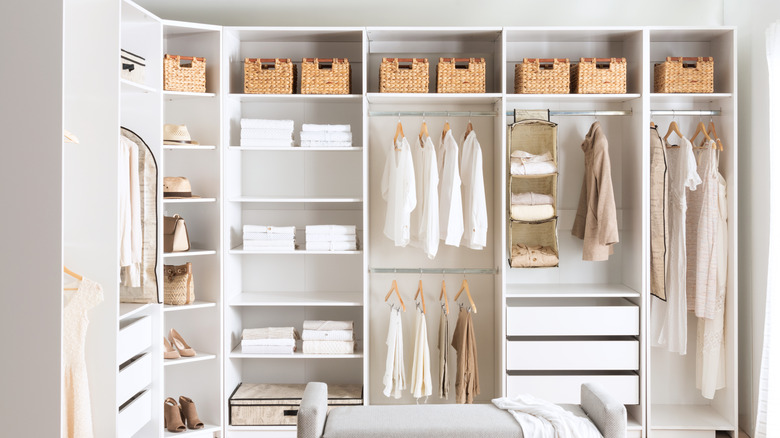The Decluttering Test That Determines Your Better Style Of Organization
Isn't it enough just to know clutter exists without having to worry about the different types of clutter? Yes, you heard correctly: there are different kinds of mess, clutter, and chaos. Whatever you call it, varying degrees and types of clutter can affect people differently. One of the most overwhelming and stressful versions is visual clutter, which can affect people in numerous ways. It can create a sense of panic and discomfort, making it impossible to relax or complete tasks, becoming an all-consuming thought and taking up all your focus. If you notice you can't concentrate when items are strewn everywhere, or even if your home is tidy but still full of stuff, you might struggle with visual clutter and its effects on your daily life. One easy way to determine how you should organize is to grab two cups or containers, one clear and one solid, and place items like pens or other office supplies in them. Whichever cup seems less chaotic to you can help you apply a tidying method to your routine: if the solid cup or container is more calming, this means you might be triggered by visual clutter.
Once you've determined your trigger, you can figure out the best way to clean and organize your space. Too many items or an accumulation of anything from kitchen supplies to decorative knick-nacks will either distract or overwhelm you. People who are prone to creating visual clutter but are also triggered by it need to put everything away fully. This means items need to have a home to keep surfaces clear.
Even clutter needs a place to belong
If you are in a room and constantly notice clothing, accessories, utensils, or anything else residing on your surfaces, this falls under the visual clutter category. These items aren't necessarily overly stacked or messy, but because they are in view, they still leave the room feeling cluttered. You don't have to become a minimalist, but it's ok to have a place for everything in your home so stuff doesn't accumulate on countertops, shelves, tables, and furniture. Even wrappers and tags can trigger a visual clutter reaction, especially since so many labels and wrappings are purposefully loud and noticeable, which adds to the noise and busy vibes that are so annoying. Removing tags and throwing out wrappers can help clear a space, then rehome the products in baskets, containers, tubs, or in cabinets and closets.
Consider purchasing furniture that doubles as storage to declutter a room, like beds with hidden built-in drawers or ottomans that can double as a storage chest. Invest in shelves that you can install inside your cabinets or under your sink to help with excess, and find homes for everything, including kitchen utensils and cooking accessories that may usually remain out on counters. Keep clutter at bay in the bathroom by storing everything from toilet paper to the toilet brush in cabinets and aesthetic baskets (or behind the toilet for the latter). Get rid of annoying wires that usually make any area seem messier by using clips or clever storage ideas like hiding them in a breadbox. Try to keep anything you have stored away until you need it. As the test shows, the less visible assembled items are, the less offensive you find them!

